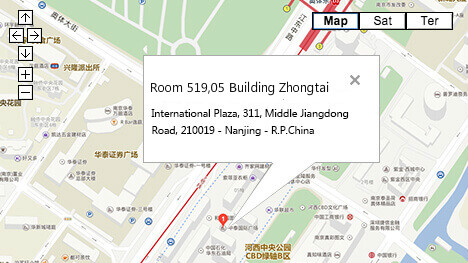Some clients have asked us “what is a certificate of conformity” over the years, and…
Design for Distribution: What Hardware Startups Need To Know
BY RENAUD ANJORAN
I had an interesting conversation about Design for Distribution with Kevin Howard, a packaging engineer and owner of Packnomics. (Kevin wrote before about packaging optimization on this blog.)
What is Design for Distribution?
Design for Distribution is the analysis of the impact of the product design on logistics costs, and the choice of appropriate laboratory testing methods in order to avoid both high damage rates and excessive logistics costs.
If your company plans to produce relatively high volumes of a specific product, you really need to be thinking about distribution early in the product design.
Kevin commented on our guide for new product introduction. On Linkedin, he wrote:
I particularly appreciated their acknowledgement of the importance of logistics costs, though I think they missed an opportunity to talk about the concept of DFD, Design for Distribution.
DFD would have placed the Packaging Engineer as a partner to the product design side in determining the size and fragility of the new product concept.
Very few companies utilize a professional packaging engineer’s perspective to minimize the landed cost of their products, starting at the product concept stage. Yes, packaging should be minimized, but if the product is particularly fragile or larger than necessary, then logistics costs climb as the packaging grows to accommodate these deficiencies.
Part of the problem is systemic, when R&D management is only held responsible for direct material and labor costs, even though their design is directly affecting the logistics costs and damage rates.
Also, beyond thinking of product design from a packaging perspective, is assessing whether distribution qualification tests are truly appropriate for your specific product and supply chain. Simply using a test standard does not guarantee both low damage rates and minimized logistics costs.
An example of poor Design for Distribution (in Kevin’s words)
I’ve worked with a company doing manufacturing in China and allowed the Contract Manufacturer (CM) to design the packaging.
One company hired me to assess the design and how it was tested. The Chinese CM had simply made 50 mm thick blocks of EPS foam for each corner of the product. Why? Because they “thought” it was an appropriate amount for an electro-mechanical product, per lots of literature suggesting this is the amount needed to survive UPS and FedEx systems.
No product testing to define fragility, and only rudimentary packaged product testing to define whether it provided an appropriate amount of protection.
As a result, the package had lots of overhang on standard US and European pallets.
There was no forethought at all on how the product and packaging would impact logistics costs, let alone whether or not it would protect the product in distribution. It turned out the foam blocks were like bricks, with virtually no way to deflect during impact.
Reducing the thickness in half made for a significantly smaller package, but also provided far more protection than the larger package, plus it allowed the product to fit nicely on typical pallets.
By rearranging the placement of accessories, the box size was formulated by considering the dimensions of the ocean containers and trucks that these products utilized for worldwide distribution. Pallet overhang is almost always going to lead to higher-than-necessary distribution damages.
Reducing the packaging reduced not only the packaging costs, but also the logistics costs, the cost/pallet, the cost/handling of pallet loads, and improved the amount of protection, thus reducing damage rates.
Should the buyer rely on the Contract Manufacturer (CM)? And is it safe to follow international standards for packaging tests?
I have never met a CM that gave proper packaging advice.
I think part of that is due to the fact that they aren’t the ones to suffer monetarily by having too large of packaging or high damage rates, at least in the short term. In the longer term, they do suffer if sales are hurt or profits are low due to size and fragility issues, so it’s very short sighted of these companies to not give better advice.
Of course, most of these companies, along with packaging suppliers, simply can’t give better advice since they don’t fully understand the distribution pipeline the products are traveling through, so they take a cookbook approach, simply using standards from ASTM, ISTA, JIS, FedEx and others, but those standards all miss some very basic issues, especially in regards to free fall drop tests and whether or not the test results replicate actual issues found in the field on a consistent basis (and never causes issues not found in real distribution).
I just attended a webinar on the ISTA Series 6 Amazon tests. I was amazed to hear the presenter say that if your product passed the tests but had too high of a failure rate in Amazon, then Amazon would require you to re-design the packaging, and then PASS THE SAME TEST.
Well, wouldn’t the excessive damage in the system be a pretty clear indication of the tests being substandard and inappropriate? The moderator didn’t answer my question about this, but how ridiculous that there wouldn’t be an automatic mechanism for Amazon/ISTA to adjust tests until the lab test replicates known, consistent failures.
From: qualityinspection



This Post Has 0 Comments